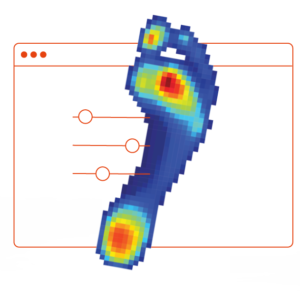Mass customization software firm Twikit has a number of products that mass customize anything from jewelry to orthotics, car parts and sports gear. Now, it’s broadened the application area of its mass customization engine by making available Laddy, a tool to mass customize lattice structures. Lattices are a great way to lightweight a product or change the modulus or other properties of a part. But, lattices are difficult to design and it is difficult to predict their performance.
Twikit’s new solution deals with both of these issues by letting you easily mass customize lattice shapes. This could mean that more people will be able to use lattices across many applications. At the same time, it adds to Twikit’s arsenal a broader category of tools that could take the company deeper into the engineer’s toolbox.

The tool is cloud-based and uses AI to make the near-immediate generation of lattices accessible to many companies. End users can also mass customize their lattices in real time and see the results on the screen before them. What’s more, the tool allows brands to sell products with lattice parts generated by custom input, including pressure maps or a 3D scan of a body part. This would enable lattice-based fashion items, for example.
The firm also says that Laddy can fill the volume of a part with a lattice structure automatically based on input from the user. This could be based on physical forces and the external shape of an object. It can additionally be linked to the company’s TwikFit product, so that biometric data can be tied to the lattice generation.

The company notes, “Laddy’s AI core learns how to transform the custom input into the ideal lattice for each application (e.g., shoewear, helmets, saddles). The solution decides where specific unit cells should be located, their dimensions, and their strut thickness to automatically generate a lattice with the required mechanical properties.”
This automates a structural approach to designing shoes with gradient soles or for having products that can be different at every voxel. Whereas the shape of a sole could already be easily designed or obtained from 3D scan data, now we can get information that can lead to individual designs or properties at each location on the shoe sole.
So, maybe if you walk on your toes, you’d have different lattices there or a different “spring” there. Or, if you had the tendency to sprain your ankle, the sides of the shoe soles can be made tougher or harder or with less give to protect you. Laddy can bring about functional customization that does more than just give you the geometry that you require.
With this tool, you can get the performance you need from a material or part at one specific location for one specific user. Laddy can also make a lot of materials “gradient-like” in the way that they could perform with a variety flexibility, hardness or softness across the part. Imagine a mattress that had different latex lattices depending on where your weight was. Or imagine something like a car seat that not only conforms to your body but gives you the support you seek at each point. Such a car seat could be softer on your upper back but tougher on your lower back to support you and more squishy toward the sides while it is firmer in the walls to keep you in place.
Imagine also a tennis racket whose internal structure could be adapted to compensate for your slice or encourage more topspin. Or think of a material extrusion orthotic that can use the same process and same material in one production step while changing the softness and “spring” where the user needs it. After talking to orthotist and prosthetist Brent Wright, I’m also super excited about the idea of using Laddy to customize braces and sockets, whereby air pockets or lattices themselves can make the socket more comfortable. I’m a huge Twikit fan and this is just a great product that expands the makeable for everyone.
Subscribe to Our Email Newsletter
Stay up-to-date on all the latest news from the 3D printing industry and receive information and offers from third party vendors.
You May Also Like
NSF Awards Kentucky $1M for Advanced Manufacturing
The National Science Foundation has awarded a $1 million grant to the University of Louisville for the Advancing Manufacturing and Building Construction Technologies (NSF AMT) project. This initiative is part...
3D Printing News Briefs, May 11, 2024: 3D Printed Stent, Tower, Sculptures, & More
We’re starting off with medical research in today’s 3D Printing News Briefs, as researchers in Korea used CT images and 3D printing to fabricate an educational simulator for a mastoidectomy....
3D Printing Unpeeled: Wind Turbines, Probiotics and Lenses
TPI Composites, ORNL and Ingersoll Rand are working to make wind turbine tooling segments that can be 18.3 meters long. These elements also include resistive wires that help keep the...
Tethon 3D Releases Cost-effective Bioprinter
Tethon 3D, known for its ceramic-loaded DLP materials, custom resins, and DLP 3D printers, has recently released a bioprinter. Vat polymerization printers like DLP systems have been widely used by...
































